Fire-resistant Tiny Home
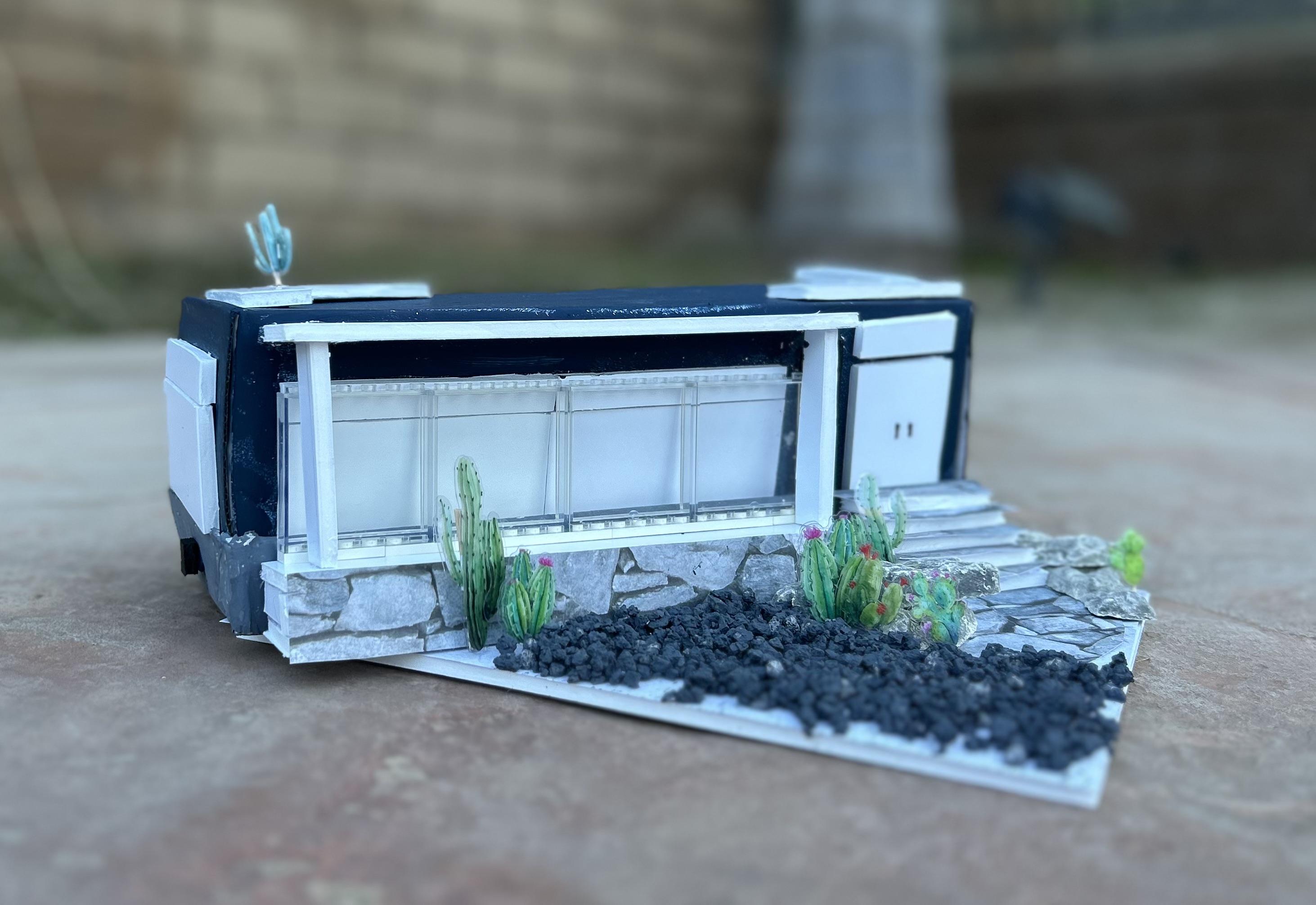


An iron hand in a velvet glove describes a firm force hidden beneath a layer of gentleness. My design embodies this phrase with its charming façade, but strong and structurally sound exterior. Wildfires are an increasingly destructive force, threatening lives, homes, and communities, especially in fire-prone areas such as Los Angeles County. Witnessing the irreversible damage caused by these disasters inspired me to design a tiny, fireproof home that prioritizes sustainability and safety. This compact structure is built using non-flammable materials such as steel, concrete, and fire-resistant coatings and most importantly the steel shipping container. By focusing on functionality in a small space, the immediate challenges of wildfires, and sustainable practices for environmental impact, I hope to have a big impact by making it small!
Supplies
Physical Model:
- 3 foam boards
- Cutting mat and craft knife
- Glue gun
- Paper
- Sharpie
- Cactus stickers
- Toothpicks
- 4 Lego glass walls
- Model rocks
- Shoebox
- Salt rocks
- Paint
3D Model:
- Tinkercad
Research
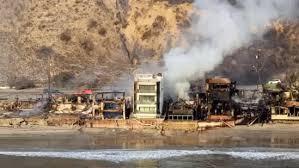
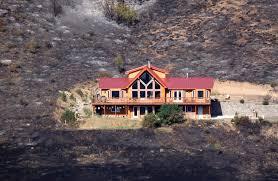
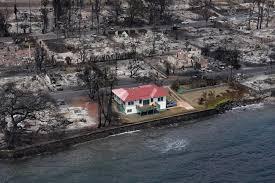
After observing firsthand the irreversible and heart-breaking effects of the wildfires that currently plague Los Angeles county and those who call the renowned melting pot their home, I was inspired to attempt a design.This design would serve as a tiny yet sustainable, fireproof home that would combat the wildfires that citizens not only in California, but all over the world face. Firstly, I researched types of houses that survived the fires. My findings showed that these houses were built with similar materials such as: brick, stucco, concrete, and steel. FEMA states that these materials are reported as fireproof. Therefore, this design will consist of only non-flammable materials, providing a solution to detrimental fire damage.
Possible Sites
Although many California counties are at risk for fire, the main target with the most cities at risk for fire is Los Angeles. According to the California Department of Forestry and Fire Protection, there are 38 Los Angeles cities that have high-risk for fire hazards; some being Agoura Hills, Beverly Hills, Diamond Bar, Glendora, Hidden Hills, Irwindale, and La Mirada. My building design will be concentrated in the LA area due to their high risk. Ideally, there would be a community or neighborhood of these my fire-resistant tiny houses.
Possible Designs

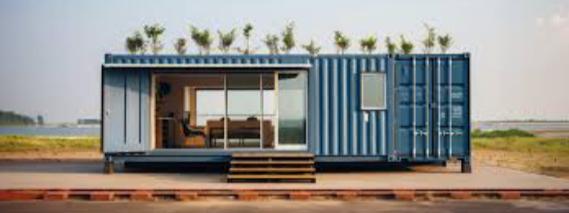

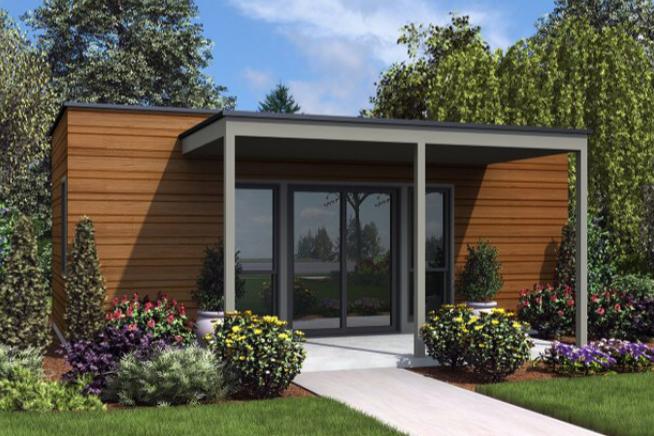
To start, I analyzed multiple designs of tiny homes. My observations brought me to realize that many tiny homes are made of steel shipping containers. These steel shipping containers are fire-proof and are a perfect medium to use for my design. Therefore, the dimensions of my design will be a 40-foot container with the dimensions of 40ft x 8ft x 8.5ft, resulting in an overall total of 320 square feet. The design will include
- reinforced tempered windows for protection and natural light
- an ember proof vent for ventilation
- stones, rocks, cacti, and gravel for fire-proof outside decoration
- mineral wool for interior insulation
- Type C drywall for interior walls
- fire-rated steel doors
- fire-proof steel window shades
- cemented floor allowing for fire-proof ceramic floors
- cemented base underneath container
- an extra coat of fire resistant paint on the exterior for true security
- a roof garden for cactus, a fire-resistant plant, inspired by Le Corbusier’s principles to provide a modern feel to match the steel container
Sketches + CAD Model
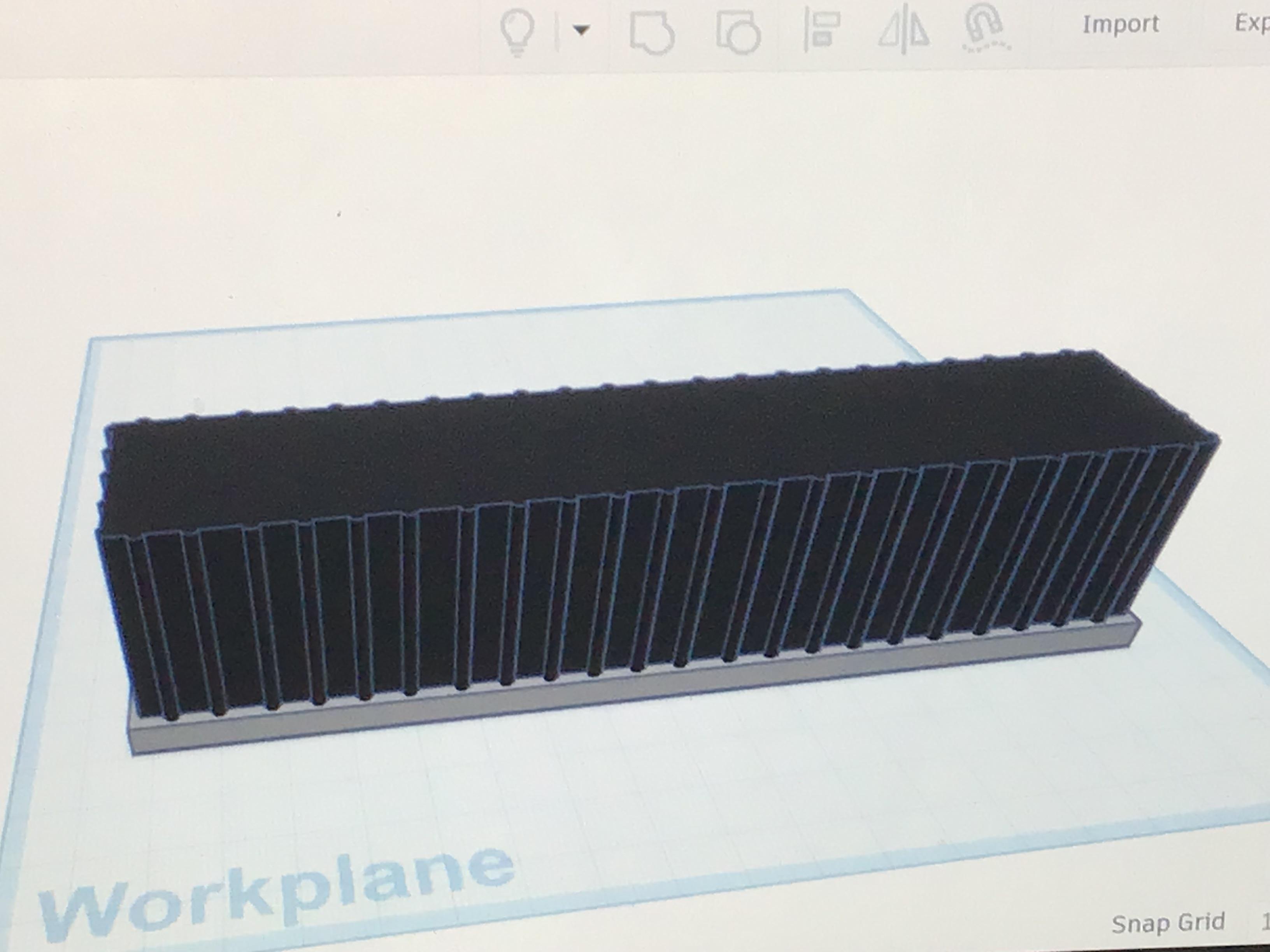





Firstly, I drew a sketch of the idea and floor plan I had based off my research. As a high school student, I have only learned how to use Tinkercad, so that is where I will model my online design.
- I created a 40ft x 8ft x 8.5ft rectangle on a 4x scale.
- Then I replicated the storage shipping container texture by adding evenly spaced poles as holes, then combining them to make steel texture in the rectangle.
- Afterwards, I added doors, windows, an outside path, and the cement bottom based on my sketch.
- Finally, I placed planters on the roof, a small balcony, and some cacti for landscaping.
Physical Model
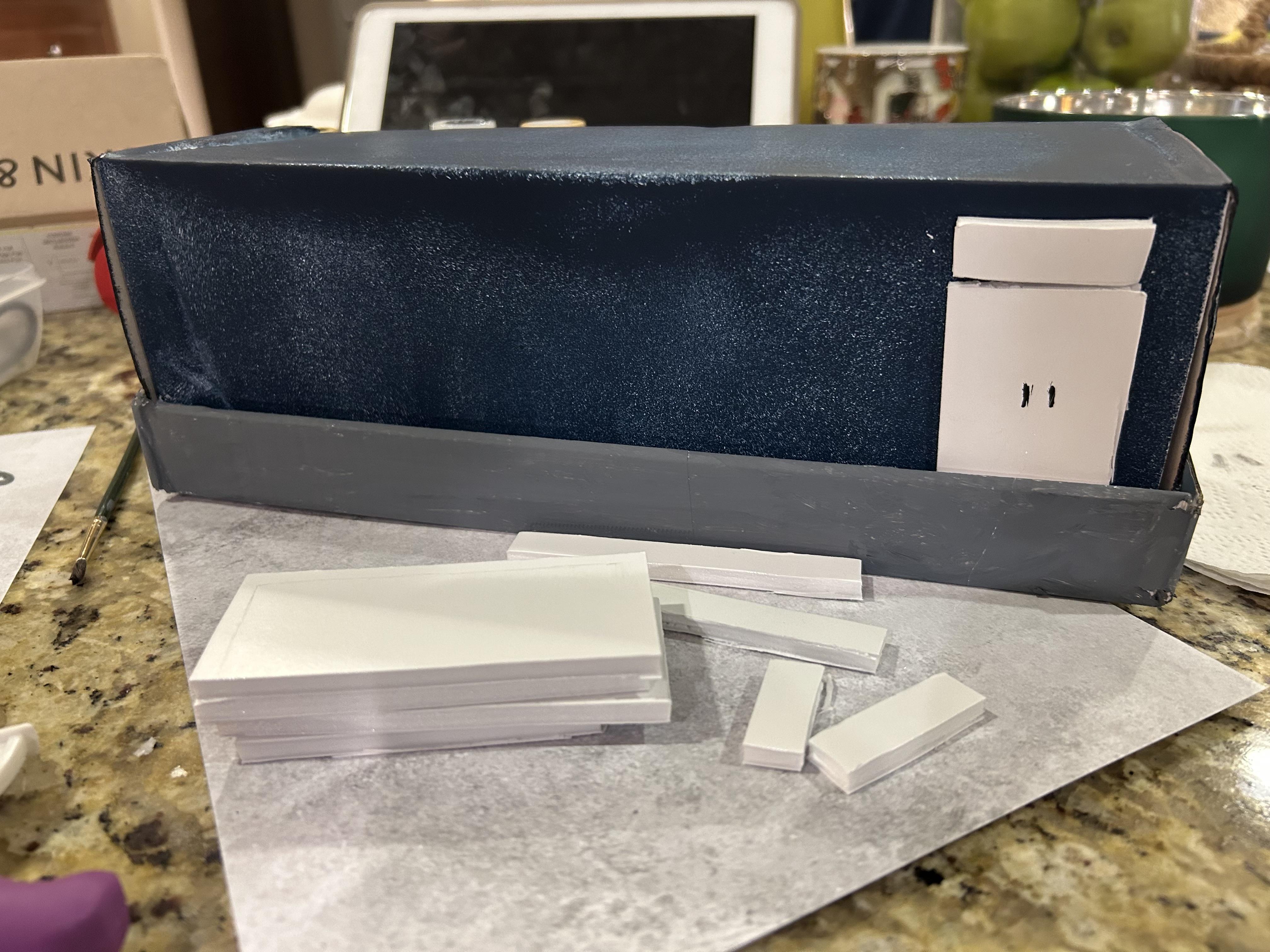

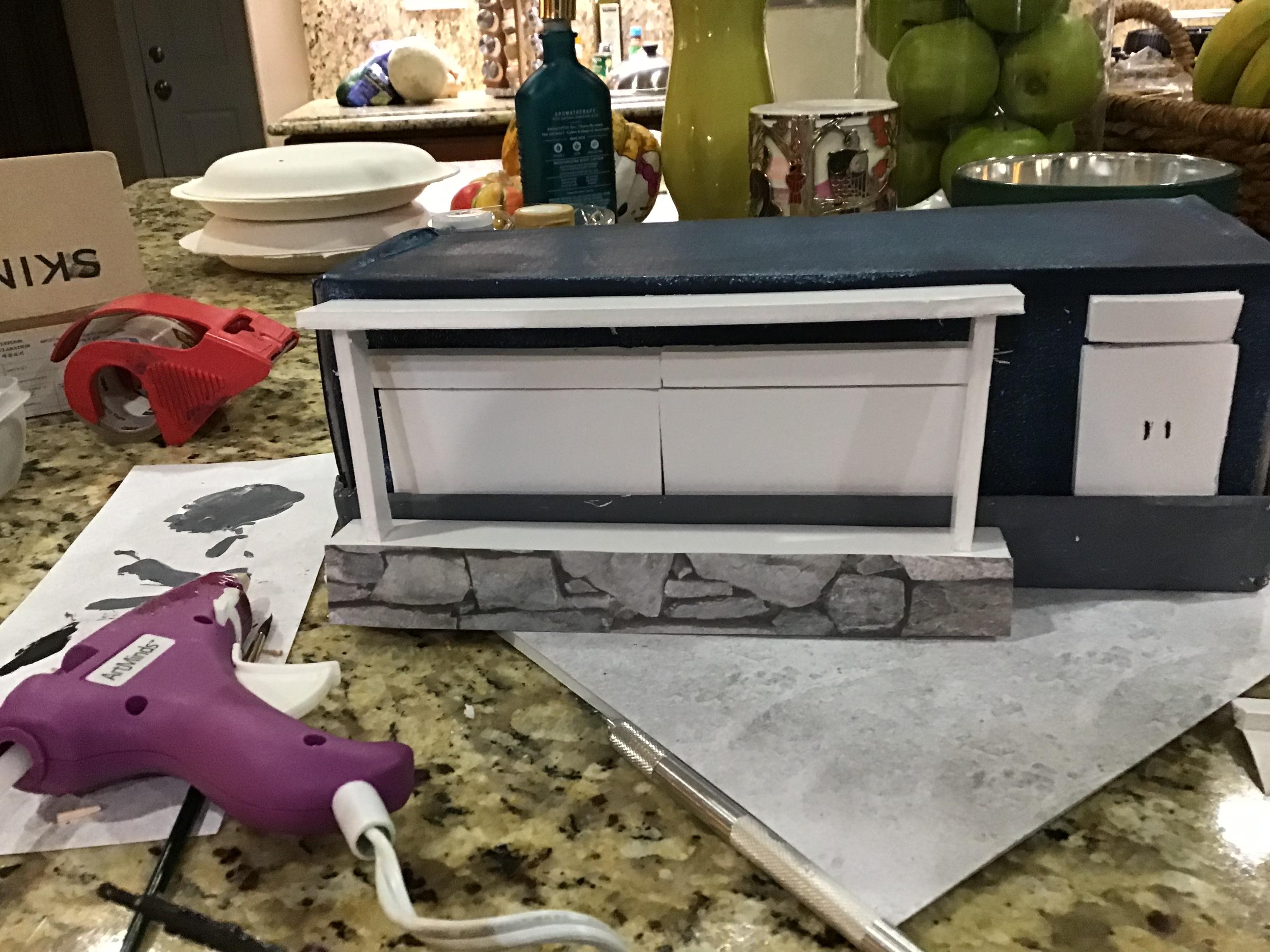

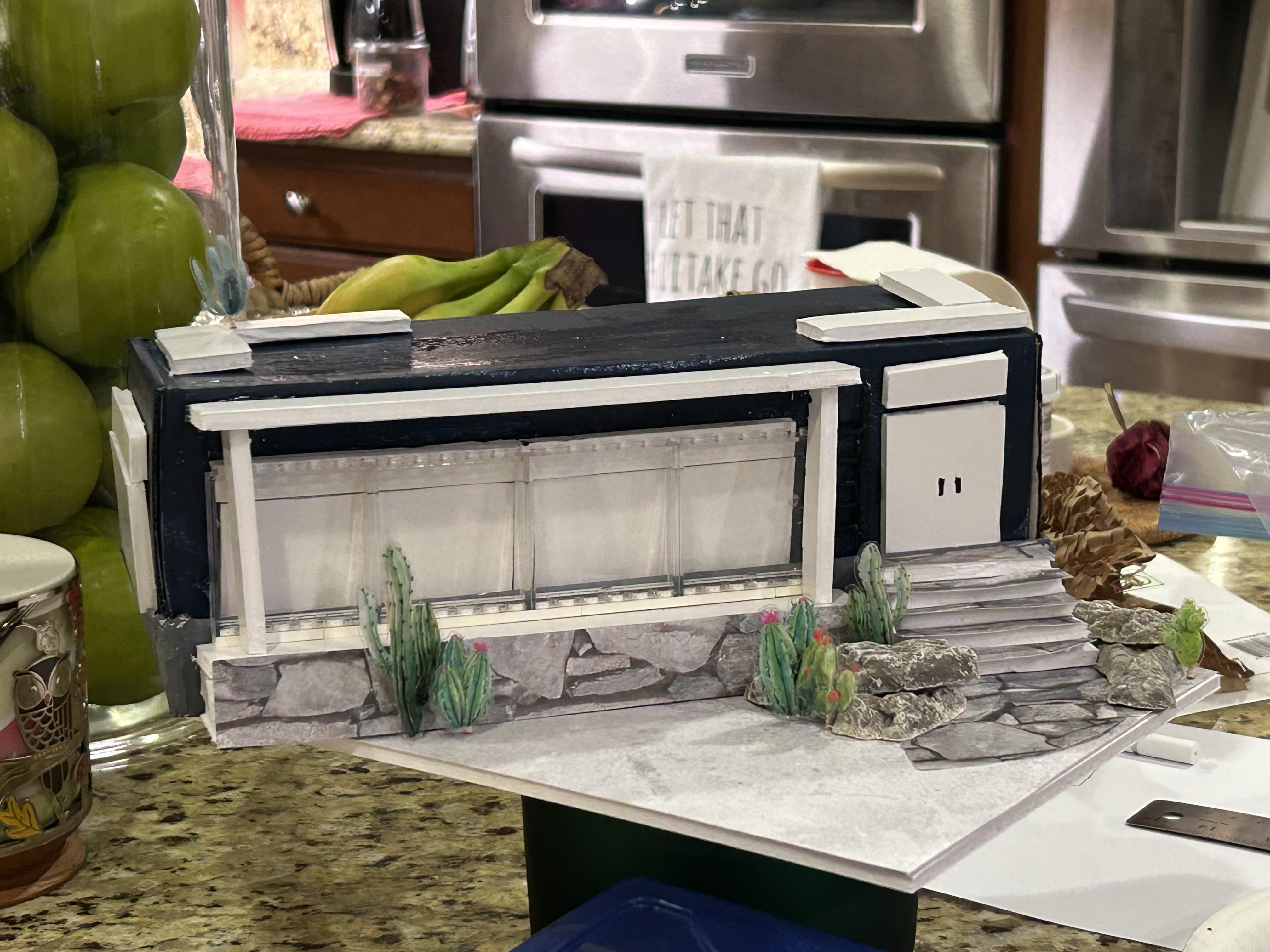


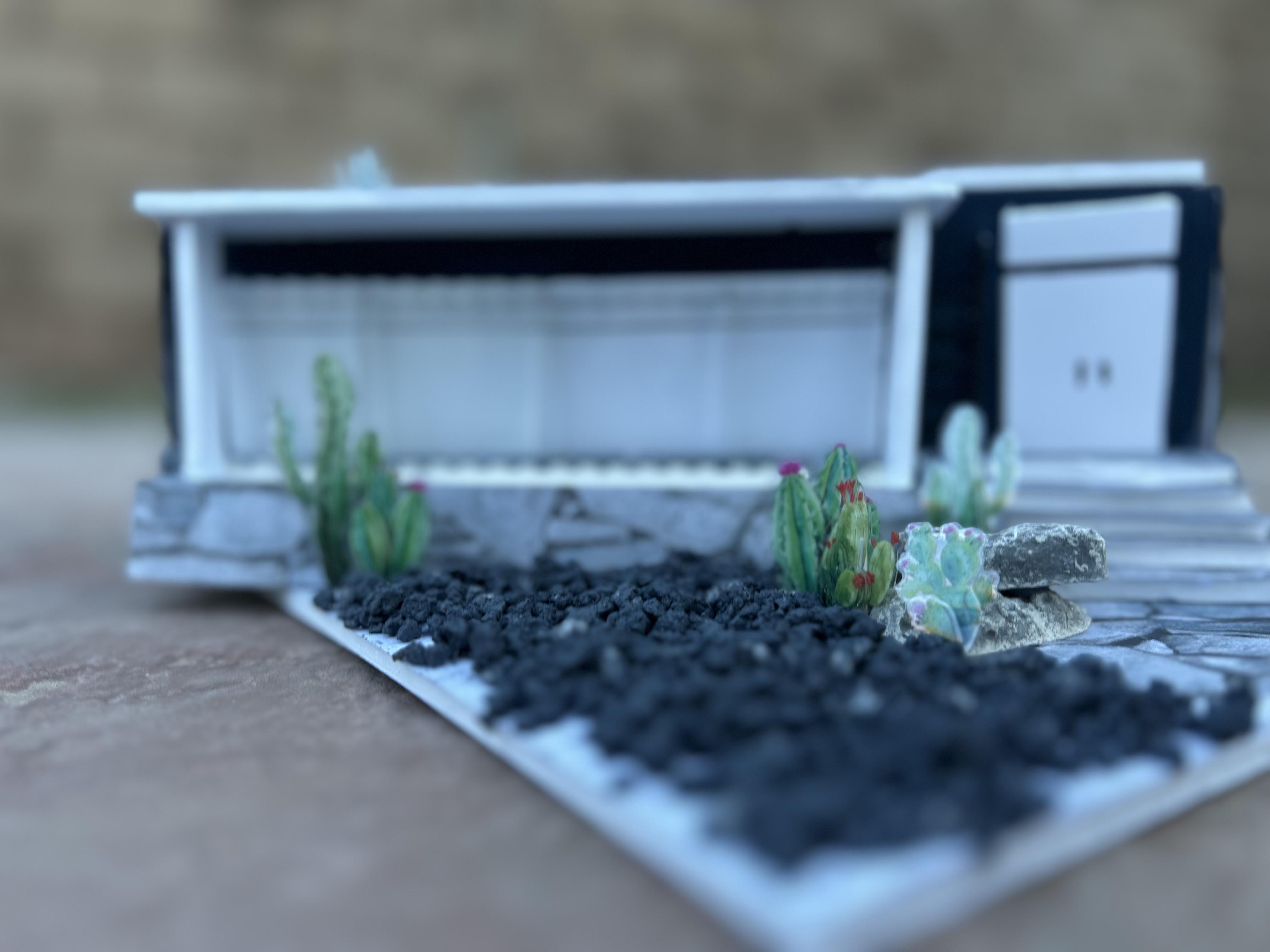
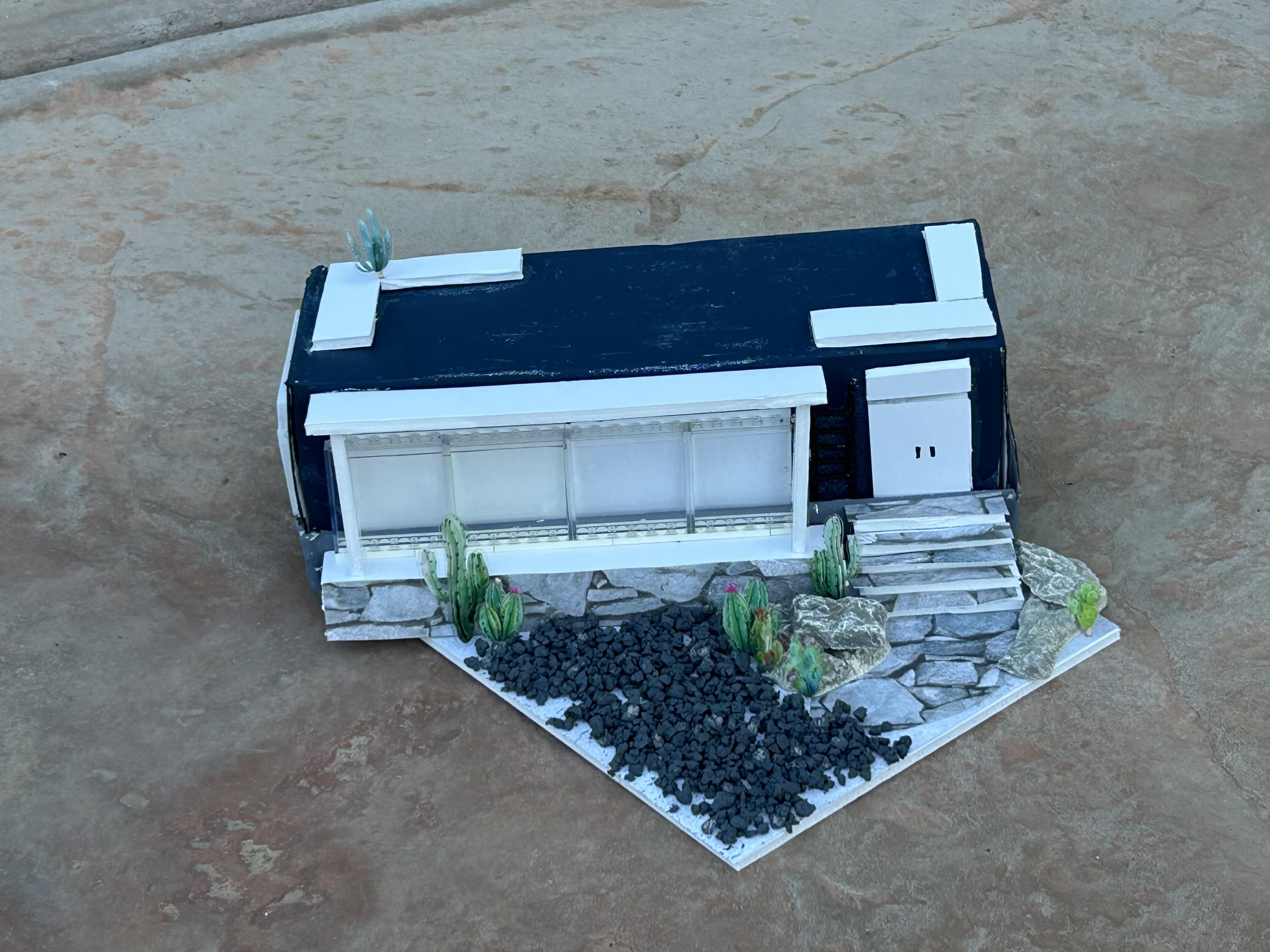

Finally, I made a physical model based on my 3D design. To create the physical model:
- I started by painting the shoebox and cutting out the doors and window shapes from the foam boards.
- I glued them onto the shoebox, then cut and put together the balcony.
- I added textured paper for aesthetics/a representation of the materials and rocks for landscaping.
- I cut foam rectangles out for planters on the rooftop garden, a ladder to get to the roof garden and added cacti stickers by glueing them onto cut toothpicks.
- Finally, I made fake gravel by mixing paint and salt rocks.